Hot peppers are often thought of as the tastebud scorching relative of the bell pepper. This is true; however, there are 4,000 types of chile peppers around the world, with new varieties being cultivated all the time. Both sweet peppers and hot peppers originated in Mexico and Central and South America and were brought to Europe by Christopher Columbus. Their use and cultivation have since spread around the world. Hot peppers, specifically, seem to have their own cult following.
The race to create the hottest pepper often results in the winner being dethroned shortly after being declared the hottest pepper around. For example, the Ghost Pepper became widely known in 2007 as the hottest chile pepper in existence at a rating of over 1 million Scoville heat units (SHUs).
This lasted until 2011, when it was surpassed by the Trinidad Scorpion Butch T pepper, which in turn was beaten out by the Carolina Reaper in 2013. The Carolina Reaper is still officially the world’s hottest pepper, as declared by The Guinness Book of World Records, but peppers like the Komodo Dragon Pepper, Apollo Pepper, Dragon’s Breath Pepper, and Pepper X are claiming to have higher SHUs.
Fans of these spicy chile peppers are devout. Even taking part in chile pepper eating contests to prove it. Aside from biting directly into the raw pepper to prove your bravado, chile peppers have also given us one of the world’s most popular condiments: hot sauce!
Which has spawned its own set of spicy chicken wing eating contests. If you’re not a fan of the melt-your-face-off chile peppers, then fear not! There are plenty of chile peppers with a mild level of heat, similar to a jalapeno. Since there are literally thousands of hot peppers, it’s impossible to mention them all here.
It also gets a little tricky to put them into categories since so many are hybridized or otherwise unique. We’ll list them here by Scoville Heat Units or SHUs so that you can pick the perfect chile pepper based on your heat tolerance and preference.
1,000-2,500 SHUs
The Poblano pepper is the most popular and widely available of the peppers in this category. They resemble bell peppers with a touch of heat. Peppers in this category are considered mild. This makes them a great place to start for those who may not have a high tolerance for heat but still want to grow something spicier than a garden-variety bell pepper.
Ancho/Poblano

This pepper is referred to as a “poblano” when it is fresh and an “ancho” when it is dried. This pepper is perfect for chiles rellenos, and mole sauces.
Biquinho Red & Yellow Blend

These Brazilian peppers are mild, tangy, and sweet. They are small and tear-drop shaped. Peppers will begin as yellow and slowly ripens to red.
NuMex Joe E. Parker

This Anaheim-type pepper is thick-walled and perfect for stuffing or roasting. These peppers can also be dried and are used in New Mexico to create decorative pepper wreaths.
Padron

This pepper was cultivated by the Spanish monks of Padron in the 1700s. Most of these peppers are mild, with an odd hot pepper in the bunch.
Pot-a-Peno

This container-friendly jalapeno hybrid is perfect for small spaces. Green peppers that are mildly hot are ready to harvest in 45-50 days, or you can leave them to turn red and even spicier in about 60-65 days.
Orange Pepperoncini

This is one of the oldest Italian pepper varieties. The yellow fruits slowly turn orange when they fully mature. They are slightly sweet and can be eaten fresh, but their flavor is intensified when pickled. It makes a great pizza topping!
Big Boss Man
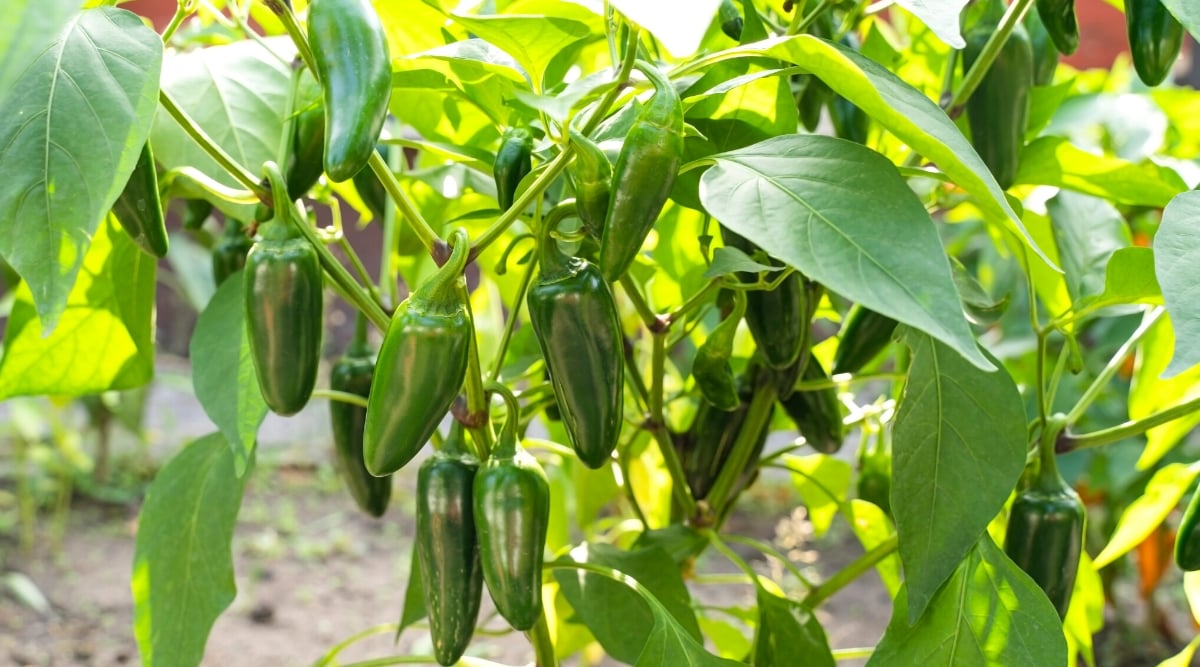
This is an ancho/poblano hybrid that produces large 7-inch-long fruits. This hybrid variety is resistant to the tobacco-mosaic virus.
Beaver Dam

This Hungarian variety was brought to Beaver Dam, Wisconsin, in 1912. These peppers are mildly hot and make a great slightly spicy stuffed pepper.
2,500-10,000 SHUs
Jalapenos are the most popular peppers in this category. They are considered medium hot. Chile peppers in this category are perfect for adding heat to salsa, like pico de gallo, salsa verde, and guacamole.
Early Jalapeno

This early maturing variety is ready to harvest in 63 days and grow on compact plants. These peppers are perfect for stuffing, pickling, or eating raw.
Jalafuego

These extra-large jalapenos are perfect for making jalapeno poppers—very productive plants. They’re a bit hotter than an average jalapeno, but not by much!
NuMex Lemon Spice

This pepper has jalapeno-level heat with a slight citrus flavor. These peppers are yellow when fully mature and make excellent pickled peppers.
Big Guy Jalapeno

This large jalapeno comes in at 5 inches long which makes it perfect for stuffing. These peppers are dark green, glossy, and thick-walled.
Jalapeno Gigante

This is another large jalapeno variety. These peppers grow on bushy plants that are perfect for containers on a patio or a deck.
Blazing Banana

This pepper has the heirloom flavor of the banana flavor, plus it packs a punch when it comes to heat! These 9-inch long yellow fruits are perfect on the grill. These plants are resistant to bacterial leaf spot.
Black Hungarian

This early maturing variety (70 days) starts out black and eventually ripens to red. Similar in appearance to jalapenos and a good substitute for them as well.
Georgia Flame

This variety originated in the Republic of Georgia. 8 inch-long red fruits are thick-walled and crunchy. They make an excellent addition to salsas!
10,000-25,000
The most popular pepper in this category is the serrano pepper. These are similar in flavor to a jalapeno but with more heat. Peppers in this category are considered to be medium hot to hot. These peppers can add some heat to soups and stews.
Serrano

These peppers are most commonly eaten when green. However, you can wait until they turn red if you want more heat. Each plant produces dozens of peppers, and the more often you pick them, the more they will produce.
Bulgarian Carrot

Very hot yet fruity, these peppers resemble 3-inch-long carrots with their yellow-orange color and shape. They make an excellent addition to chutneys.
Challeano

These small peppers are very hot with light citrus and berry overtones. Plants are highly productive and mature in the mid-to-late season.
Ralph Thompson’s Squash

Despite its name, this is a pepper variety, not a squash! This variety was originally brought to the United States by Italian immigrants when they arrived in Boston as indentured servants. These red fruits are small, stout, and saucer-shaped with strong ribbing.
25,000-50,000
The most popular pepper in this category is the cayenne pepper. Peppers in this category are considered hot and are great for making hot sauces or dehydrating for use as red pepper flakes!
Cayenne Blend
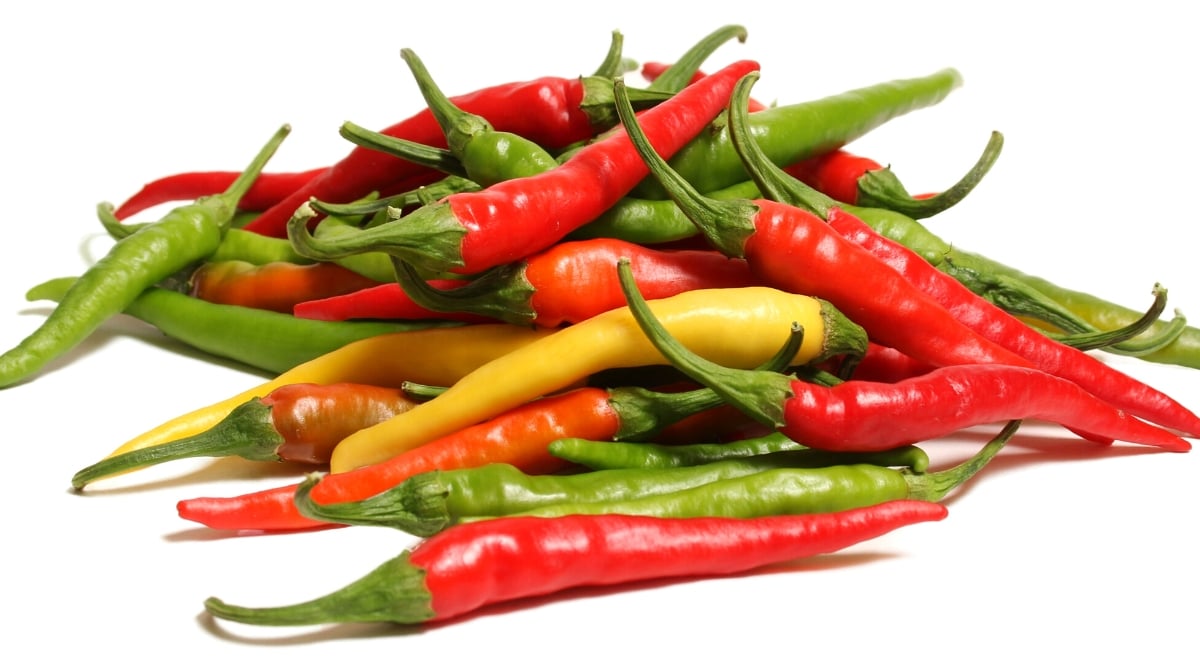
This blend of cayenne seeds produces both yellow and red cayenne. These peppers are great for adding heat to soups and stews. They can also be dehydrated and ground up to produce cayenne powder.
Santaka

This Japanese pepper is very hot! The small peppers grow in an upside growth habit, similar to ornamental peppers. This makes the plant beautiful enough for not only the vegetable garden but as a landscaping border as well.
Tabasco
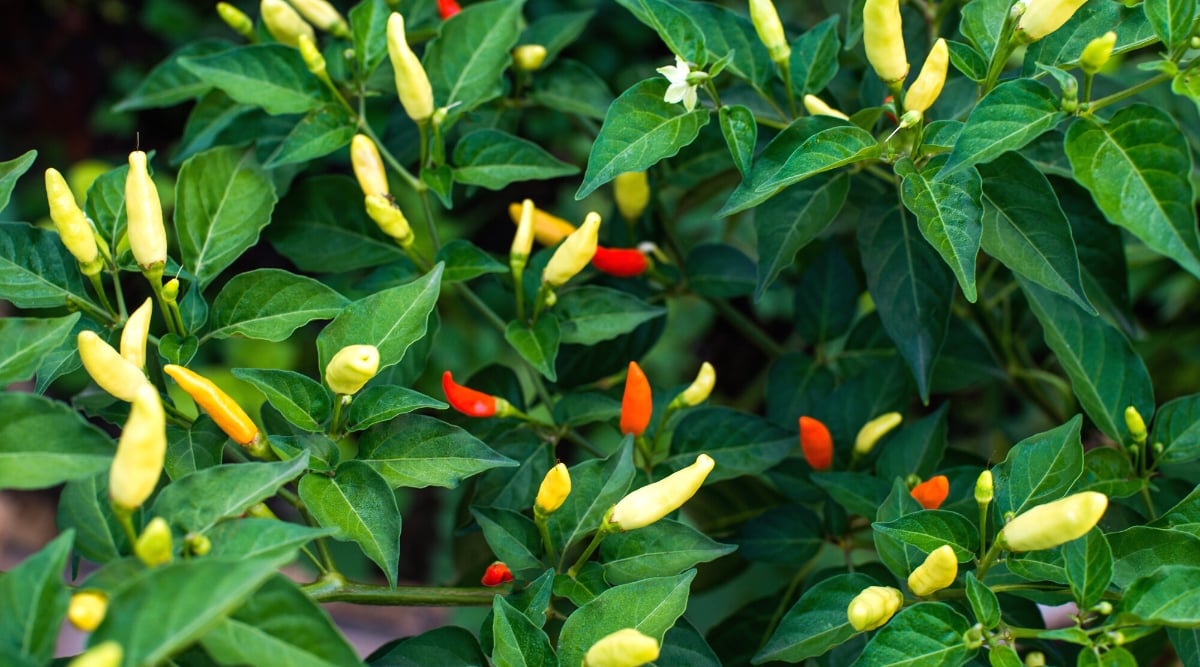
This pepper originated in Mexico but quickly became a favorite in the Southern United States. This pepper is widely used to make the hot sauce of the same name first produced in Avery Island, Louisiana.
Hot Lemon

These peppers have a unique citrus-smoky-spicy flavor. They are yellow and 3-4 inches long when fully ripe. They can be eaten fresh but also make a uniquely yellow dried chili flake.
Real Deal

This hybrid variety boasts the flavor of habanero but without the intense heat. The fruits begin green and turn red when fully ripe. Each plant can bear up to 40 fruits.
Dragon Cayenne

This pepper is 5 times hotter than a jalapeno! These peppers are perfect for drying and tossing whole into soups and stews or crushing into red pepper flakes.
Aurora
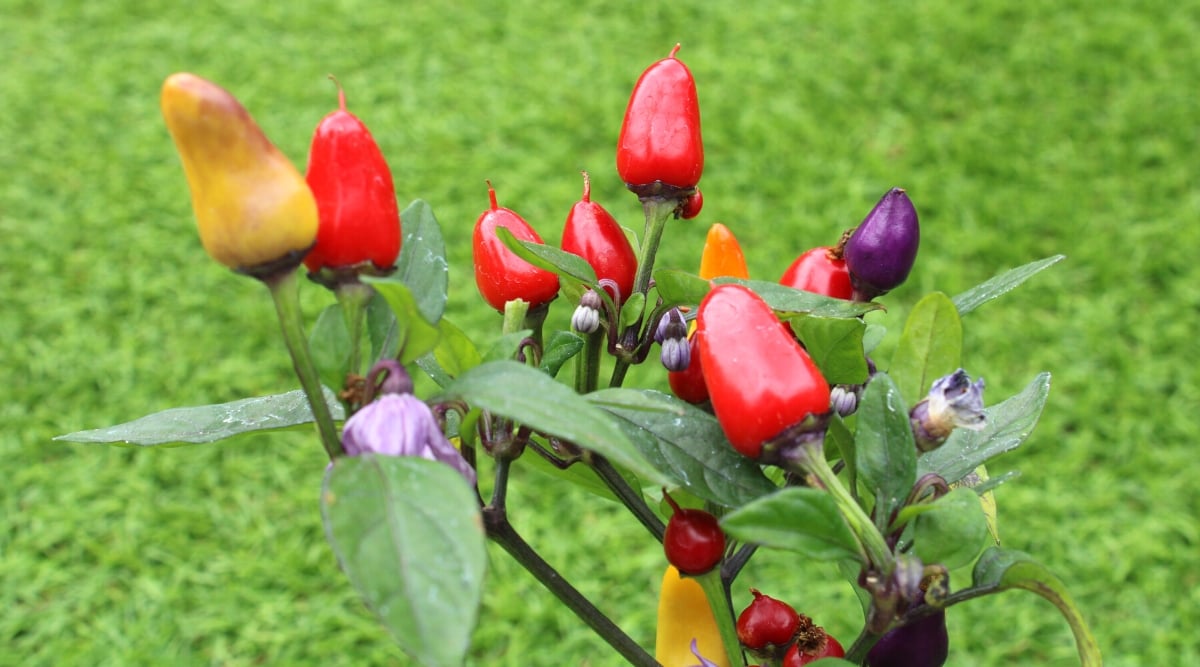
These peppers begin a deep purple and slowly ripen from yellow to red. This variety can be grown as an ornamental, but the peppers are also spicy and delicious! It is a dwarf-sized plant which makes it perfect for containers.
Ausilio Thin Skin Italian

This Italian-style thin-skinned frying pepper is medium hot and has excellent flavor when roasted. This pepper has been passed down for 5 generations by the Ausilio family.
Fish

This 19th-century African-American heirloom produces striped peppers. The plants themselves also have variegated foliage. They were traditionally used in oyster and crab houses in the Chesapeake Bay, hence the name Fish.
Hinkelhatz

This pepper has been cultivated by the Pennsylvania Dutch since the 1880s. The name translates to “chicken heart.” These small 1-2 inch fruits were traditionally used for pickling and making pepper vinegar.
Hot Portugal

Sturdy upright plants are very productive. These vivid red peppers grow to about 6 inches long. They can be eaten fresh but also dry well.
Rooster Spur

This rare variety has been grown in the family of Virgil T. Ainsworth of Laurel, Mississippi, for the last 100 years. These small 2-inch long bright red peppers are traditionally used to make Rooster Pepper Sausage.
50,000-100,000
The most popular pepper in this category is the Thai bird chile. These peppers are considered very hot. These peppers are common in Thai, Vietnamese, Malaysian, and Indonesian cuisine.
Thai Hot

If you love spicy Thai food, then this is the pepper for you to grow! It is delicious in curries, soup, and stir-fries.
Joe’s Long Cayenne

This variety is originally from Calabria, Italy. Finger-width peppers can grow to be 12 inches long! Great for fresh eating or for drying.
Martin’s Carrot

This variety was developed in the 19th century by Mennonite horticulturalists Jacob B. Garber. These plants produce carrot-shaped, 3-inch long, deep orange-red fruits that are slightly smoky and hot.
Maule’s Red Hot

This pepper was first introduced by the Wm. Henry Maule seed company of Philadelphia. It is ideal for making hot sauce or dried red pepper flakes.
McMahon’s Texas Bird

This variety is native to southwest Texas, and these small plants are ideal for containers. These plants are easy to overwinter indoors. Produces small, round red peppers that are exceptionally hot.
100,000-350,000
The most popular pepper in this category is the Habanero pepper. These peppers are considered to be extremely hot. These peppers are small in size but pack a punch! Habanero-mango has become a popular flavor combo since the mango’s sweetness helps tame the heat from the habanero. And habaneros also have a slightly fruity, divine flavor once you get past its fire.
Habanero

These peppers start out green, then turn yellow, and finally turn orange when fully mature. They can be eaten at any stage, but to get the full heat and flavor, wait until they turn orange. Very hot with a mild citrusy sweet flavor. A thin slice adds a lot of heat.
Scotch Bonnet

This pepper is commonly used in Caribbean and Latin dishes. Intensely hot with a slight citrus flavor.
Habanero, Red

This pepper is also known as Lucifer’s Dream. These small, fruity, rippled, red peppers resemble Habaneros, except they are red instead of orange. They are a favorite in Caribbean dishes, and they are sizzling hot!
350,000-750,000
The peppers in this category are considered fiery hot! These are not for the faint of heart, but they can make a very spicy hot sauce.
Fatalii
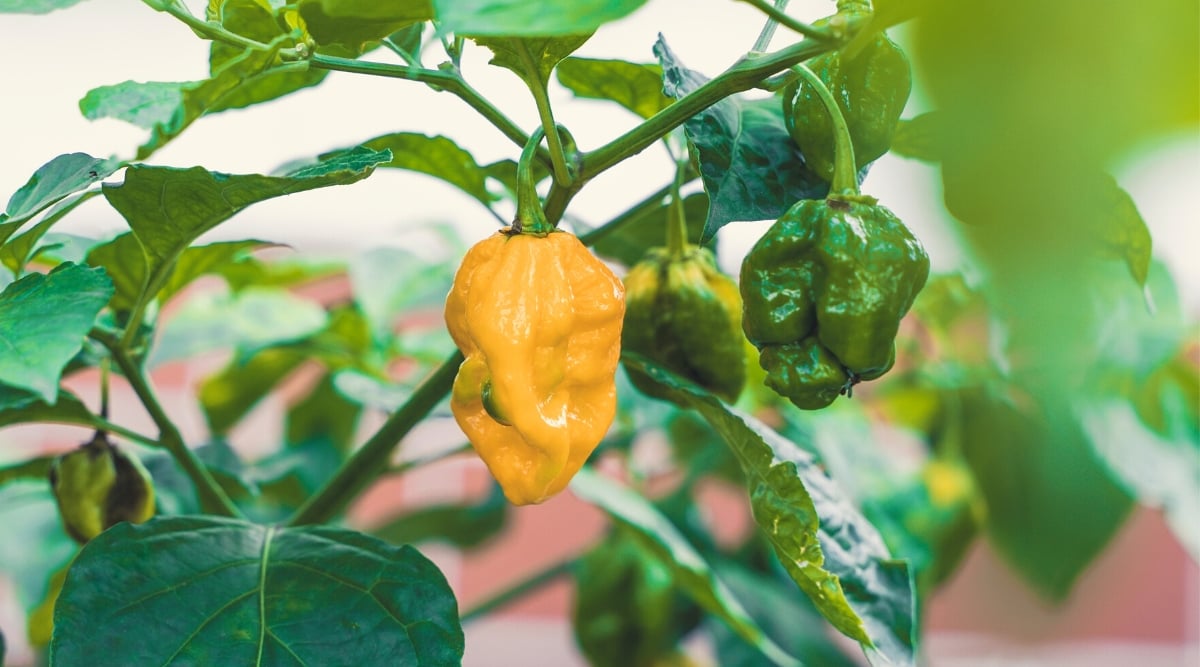
This pepper originated from the Central African Republic. These habanero-type peppers are golden orange, 3 inches long, and have very few seeds. They are a great choice for containers, making them easy to overwinter indoors in pots.
750,000-1,500,000
The most popular pepper in this category is the Ghost Pepper. Peppers in this category are approaching the hottest peppers in the world.
Ghost/Bhut Jolokia

This is one of the hottest peppers in the world. If your heat-loving taste buds can’t be satisfied by any other chili pepper, you might want to try growing ghost peppers. They are fiery and fruity and can be used for everything from dried chili flakes to hot sauce to fresh salsas.
1,500,000+
When it comes to the hottest of the hot, there are few to choose from in this category. Peppers in this category are the hottest you can grow.
Carolina Reaper

The Carolina Reaper is the most popular pepper in this category. However, the Carolina Reaper is a registered trademark, making it illegal to sell these seeds for profit.
Final Thoughts
Now that you’ve learned about all the different types of hot peppers to grow in your garden, the next step is to settle in and pick one! Whether you aim for something a little more tame or decide to tempt fate with a Ghost Pepper, there are many different options you can choose from, no matter your garden goals.














